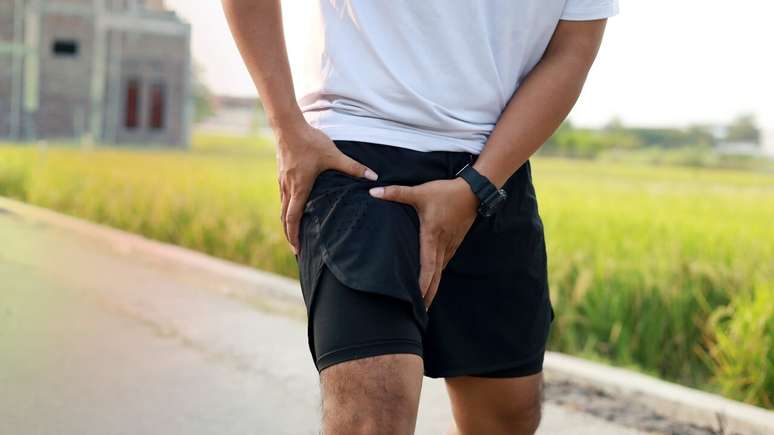Gabriel Fernandez, columnist for Sport Life, explains that the effectiveness of this activation is essential to stabilize the movement and avoid injuries
Muscle coactivation is the term used to describe the simultaneous activation of agonist muscless (who are involved in the movement) e antagonistic muscles (opposite movement) around a joint during muscle contraction. This phenomenon serves to stabilize the joint and ensure that it is safe during movement.
For example, when you lift a heavy load, agonist muscles (such as your elbow flexors) contract to perform the movement. While antagonistic muscles (such as the elbow extensors) coactivate to stabilize the elbow joint and prevent injury.
Muscle coactivation can be influenced by several factors. Such as exercise intensity, joint stability, neuromuscular coordination, and even the individual’s experience with the specific movement.
Muscle coactivation in running
In running, muscle coactivation plays an important role in joint stabilization and shock absorption. After all, agonist muscles (like quadriceps and glutes) contract to propel the body forward. While the antagonist muscles (such as the hamstrings and calf muscles) coactivate to stabilize the knee and ankle joints.
Muscle coactivation is also important to control movement and ensure running efficiency. For example, the stabilizing muscles of the hip and trunk are co-activated to maintain correct posture and avoid injuries.
In experienced runners, muscle coactivation may be more efficient, resulting in a smoother and more economical run. Conversely, in novice runners or in fatigued situations, muscle coactivation may be less effective. Leading to greater energy demands and increasing the risk of injury.
Therefore, it is important to develop running-specific muscle strength and neuromuscular coordination. In order to improve muscle coactivation and optimize performance.
Important muscles for runners
In addition to agonist and antagonist muscles, other muscle groups play an important role in running and muscle coactivation:
Stabilizer muscles. These are the abdominals and paravertebrals, which help stabilize the spine and trunk during running. Contributes to correct posture and efficient energy transfer.
Intrinsic muscles of the foot. They are responsible for stabilizing the foot and ankle. Helps maintain the shape of the arch of the foot and absorbs impacts while running.
Hip flexor muscles and extensions. In addition to the glutes and thigh muscles, the hip flexors and extensors are essential for propulsion and control of hip movement during running.
Muscles of the ankle and foot. They are in the calf (like the gastrocnemius and soleus). They are important for propulsion, while the muscles in the anterior compartment of the leg help control ankle dorsiflexion.
Efficient muscle coactivation can prevent injuries
Efficient coactivation of these muscles is essential for running stability, effectiveness, and injury prevention. Running-specific training programs can help develop the strength and coordination needed to optimize muscle coactivation and improve performance.
In addition to the muscle groups mentioned, muscle coactivation in running also involves adequate activation of the core muscles, which are essential for maintaining the stability of the pelvis and spine during running. The core includes the deep abdominal muscles, lower back muscles, and middle gluteal muscles, among others.
An important function of the core while running is to minimize excessive movement of the pelvis, which can occur due to a lack of stability. Coactivation of the core muscles helps keep the pelvis in a neutral position. This optimizes movement efficiency and reduces the risk of injury. Especially in long distance running.
Furthermore, muscle coactivation in running is also influenced by running technique. Correct technique can promote adequate activation of the muscles involved in running, improving movement efficiency and reducing fatigue.
Running goes far beyond putting on sneakers and going outside.
In summary, muscle coactivation in running is a complex process that involves the coordinated activation of multiple muscle groups to provide efficient stability, shock absorption, and propulsion. Developing adequate strength, coordination and technique are key to optimizing muscle coactivation and improving running performance.
Running involves more than just putting on a pair of sneakers and heading out. To avoid injury and improve performance, it is important to consider consulting a physical education professional who specializes in running biomechanics.
This professional can perform a detailed analysis of running biomechanics, identifying possible inappropriate movement patterns or muscle imbalances. And thus offer specific indications to improve one’s technique and reduce the risk of injuries.
Additionally, a running biomechanics expert can help create a customized training program. Taking into account your goals, fitness level and injury history. This can significantly help improve your performance and get the most out of your running training.
So whether you’re looking to improve your running, prevent injury, or simply improve your technique, consulting a professional who specializes in running biomechanics can be an important step in achieving your goals safely and effectively.
Source: Terra
Ben Stock is a lifestyle journalist and author at Gossipify. He writes about topics such as health, wellness, travel, food and home decor. He provides practical advice and inspiration to improve well-being, keeps readers up to date with latest lifestyle news and trends, known for his engaging writing style, in-depth analysis and unique perspectives.








